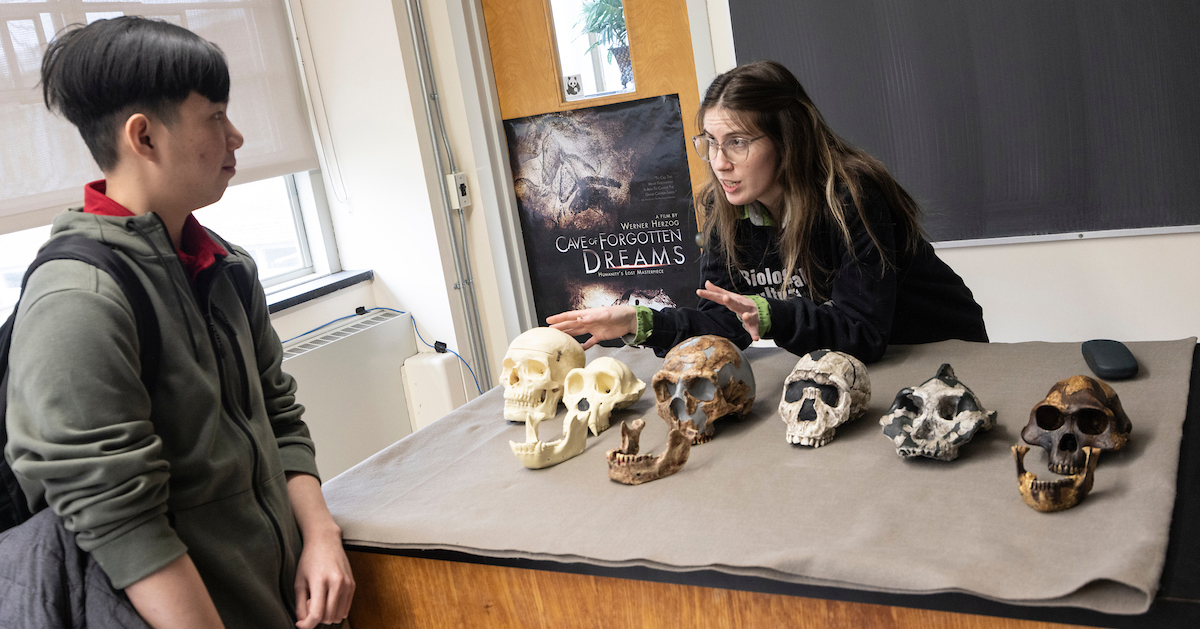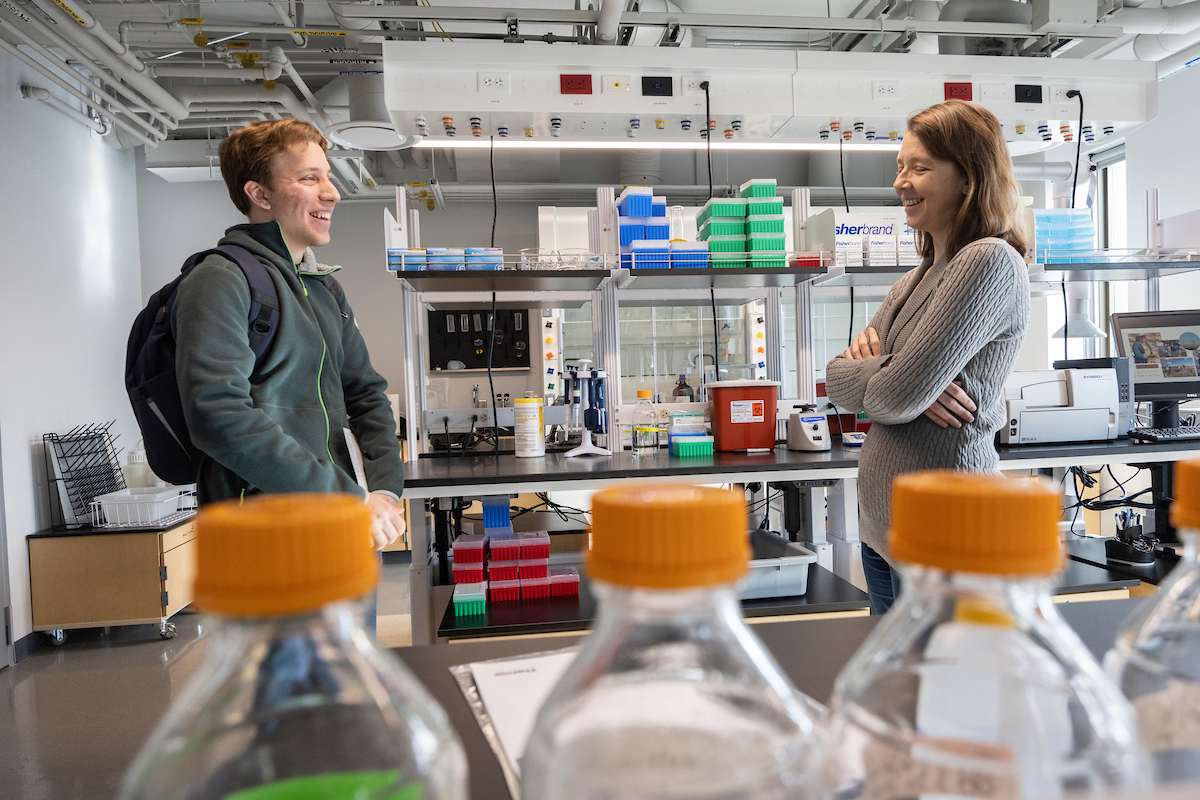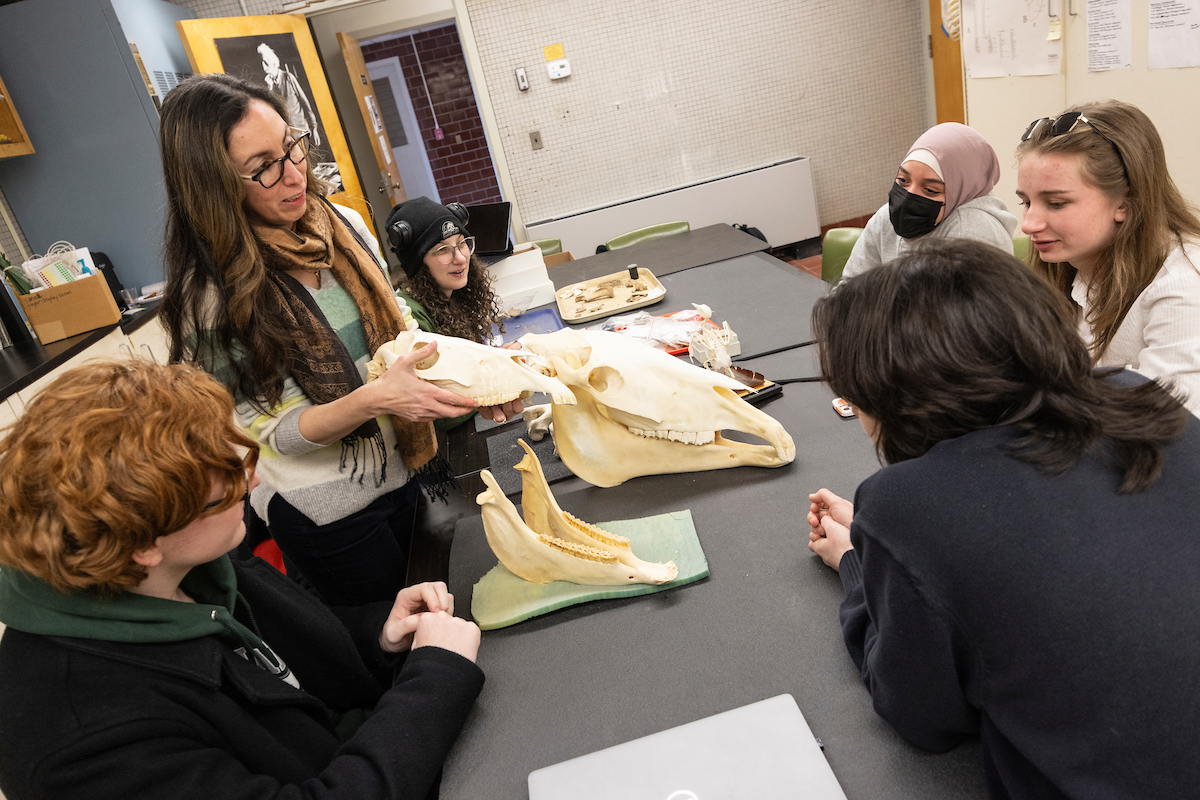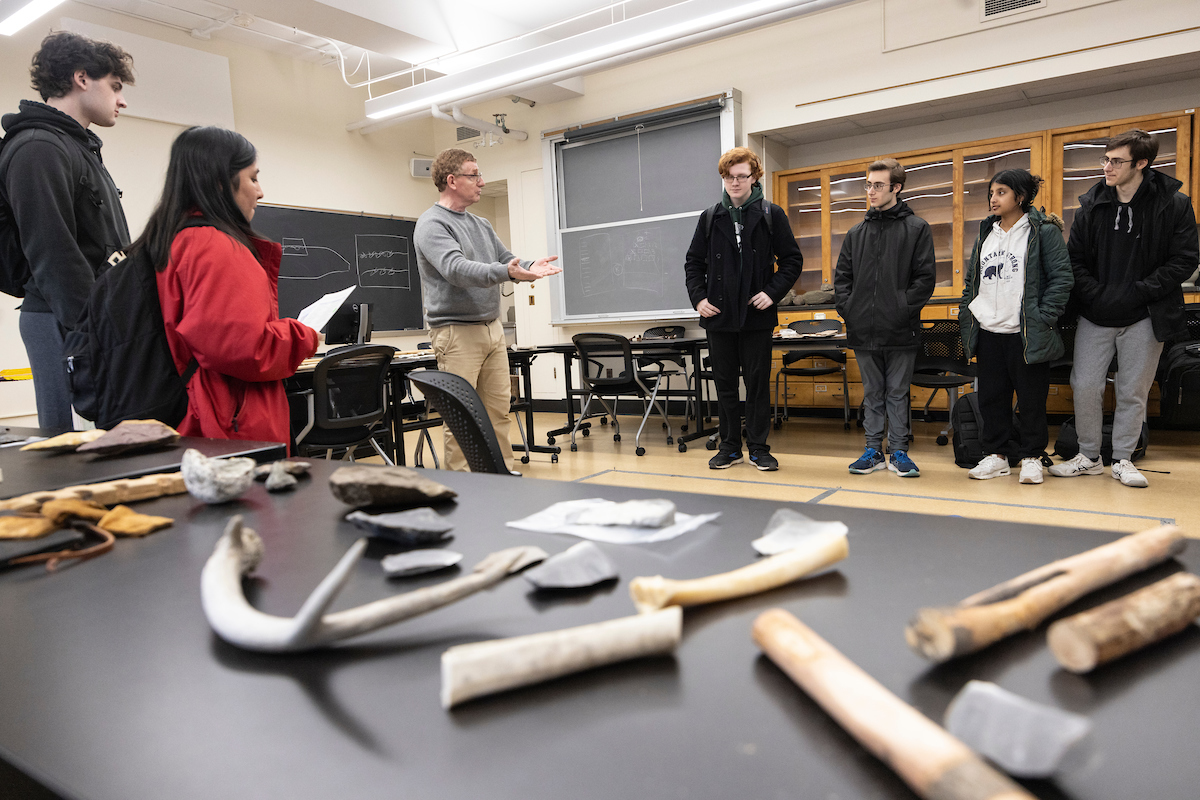World Anthropology Day showcases many facets of Binghamton University programs
Featured labs focused on plants, animals, remote sensing and historical analysis, skeletal analysis, forensic anthropology and human genetics

Binghamton University’s Anthropology Department hosted a World Anthropology Day celebration on Feb.15, with 12 archeology and biological anthropology labs in three science buildings showcasing the department’s full range of academic offerings.
Featured labs focused on plants (paleoethnobotany), animals (zooarchaeology), remote sensing and historical analysis, skeletal analysis (osteology), forensic anthropology and human genetics, just to name a few. Professors shared their research topics and what opportunities await curious students in the wide world of anthropology.
At the Lab for Anthropometry and Biomarkers, students interested in biology could learn about organismal biology, exosystems and biomarkers in the field of biological anthropology. Associate Professor Katherine Wander led the presentation at her new lab in Science 2.
“I am interested in the whole organism, what I can say about inflammation in this individual or iron deficiency in this individual,” Wander said. “I’m interested in characterizing how much inflammation is happening in this individual and how that affects their fertility and their health.”
Examining these patterns of information can further research in identifying biological changes, assessing disease risk and contributing toward advancements in public health. In the fall, Wander will offer a new lab course called “Biomarkers: Measurement & Interpretation,” which will offer an in-depth understanding of how biomarkers are measured and why we use them.
“Biomarkers are the things that are easy to measure that give us that systems-level interpretation,” she said.
If students are interested in excavating artifacts and piecing together their place in our shared history, they may be inclined to visit the Public Archaeology Facility (PAF) in Science 1. Peppered throughout the room were artifacts excavated from across the Northeast, from rusted cannon balls from the French and Indian War to stone tools discovered in the Susquehanna River.
“It’s really cool to dig a hole and find things that people haven’t touched in either hundreds or thousands of years,” said PhD student Kara Jonas.
PAF offers cultural resource management services to clients as well as community-based programs and a lab open to student volunteers.
“Something that I really love is working with local communities (on a site), and having their input and their perspective completely change the stories that you can tell and the questions you can ask,” Jonas said.
This summer, Maria O’Donovan, the director of the Master of Arts in Public Anthropology program, will offer an archeology field school in Broome County, giving students the chance to gain a wide variety of archeological skills and earn 6 credits.
“Archeology is that great combination of history and science,” O’Donovan said. For students who may be on the fence about anthropology, she offered some advice about where to begin: “Start with an Intro to Anthropology course, where you can learn a little bit about all of the different four subfields, and then you can gauge whether you’re interested in anthropology as a whole, and if you are, where your specific interests lie.”
At Professor Rolf Quam’s paleoanthropology lab, skeletons of animals and skulls of human ancestors were prominently on display. A degree in paleoanthropology can offer students a chance to understand the wonders of human evolution by examining ancient fossils.
“I really enjoy learning about human evolution, but there’s also the capacity for traveling and digging up dirt,” said PhD student and graduate teaching assistant Cai Caccavari, MA ‘23. “There is a lot of biochemistry in the field, and we rely heavily on it for understanding the relationships beyond just looking at the morphology, because just looking at the bones can only get us so far.”
Biochemistry is a crucial part of investigating the past and is used in various ways in the study of anthropology. Coupled with human evolution, students can investigate the growth of development of fossils while utilizing other tools such as CT scans.
“If you like biochemistry and human evolution, you could go to graduate school,” Caccavari said.
Lecturer Lubna Omar’s Archaeological Analytical Lab is devoted to the study of human-animal interactions through bone remains. Through zooarcheology, students can piece together small pieces of bones to create a vivid picture of the life of various animals.
“It is a type of field for people with specific types of skills. You have to be into solving complex puzzles because the bones are fragmented,” Omar said.
The work is closely tied to that of archaeologists, since in excavations, many bones are found in ancient garbage pits, she said.
“Cultural resources management usually hires zoo archaeologists like me to help them with their work, otherwise they won’t understand what happened at the site,” she explained.
At the Archaeology Teaching Lab, Assistant Professor Sébastien Lacombe studies people of the past by analyzing their ancient technology. Students in his lab can also examine the social implications and purpose of crafting these technologies and see the variations of culture across different periods of human evolutionary history.
“You have anthropology everywhere. Do you want to be a doctor? Biological anthropology. Do you want to work for the parks service? Archaeology,” Lacombe said. “It’s the human dimension that distinguishes us from any other.”



